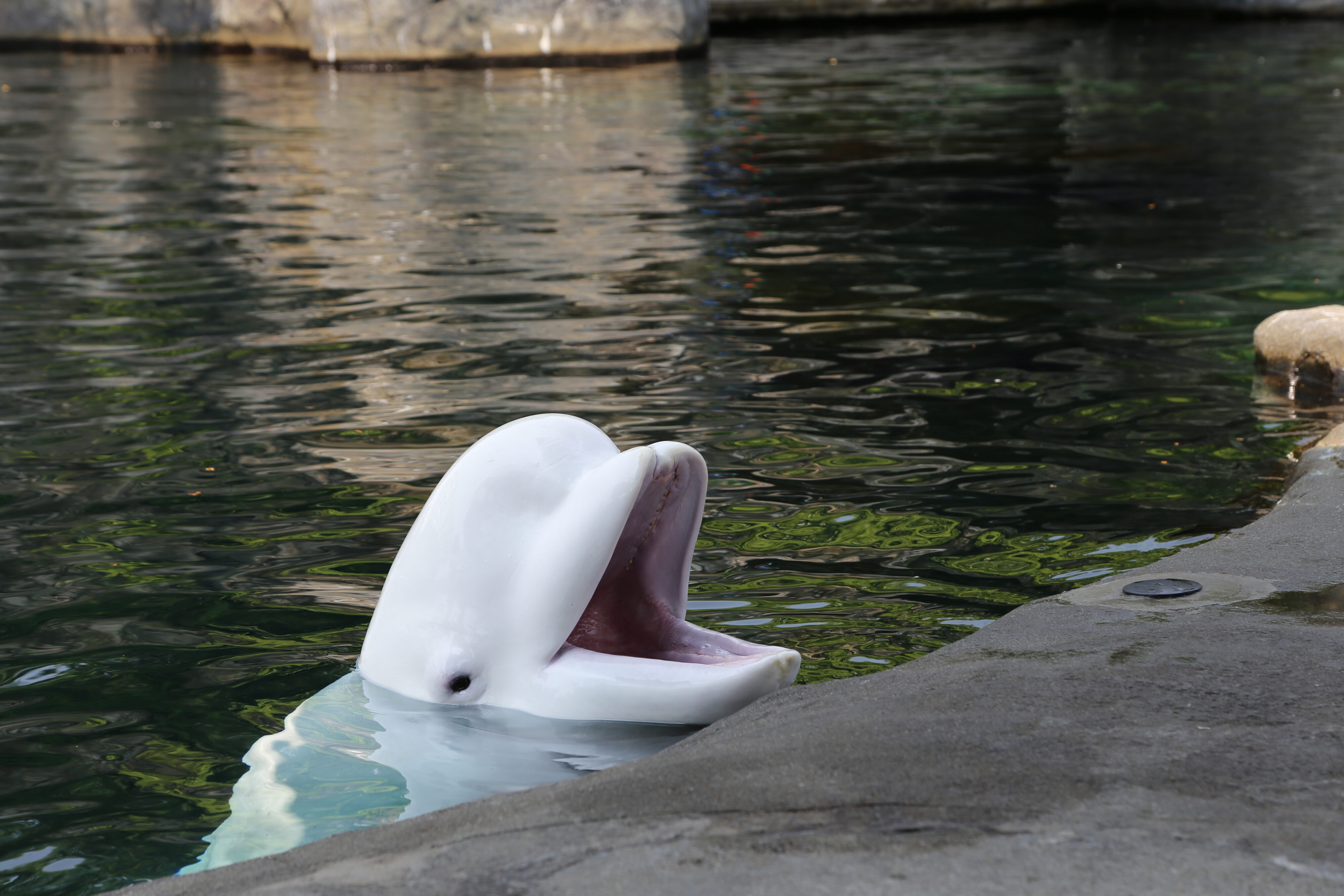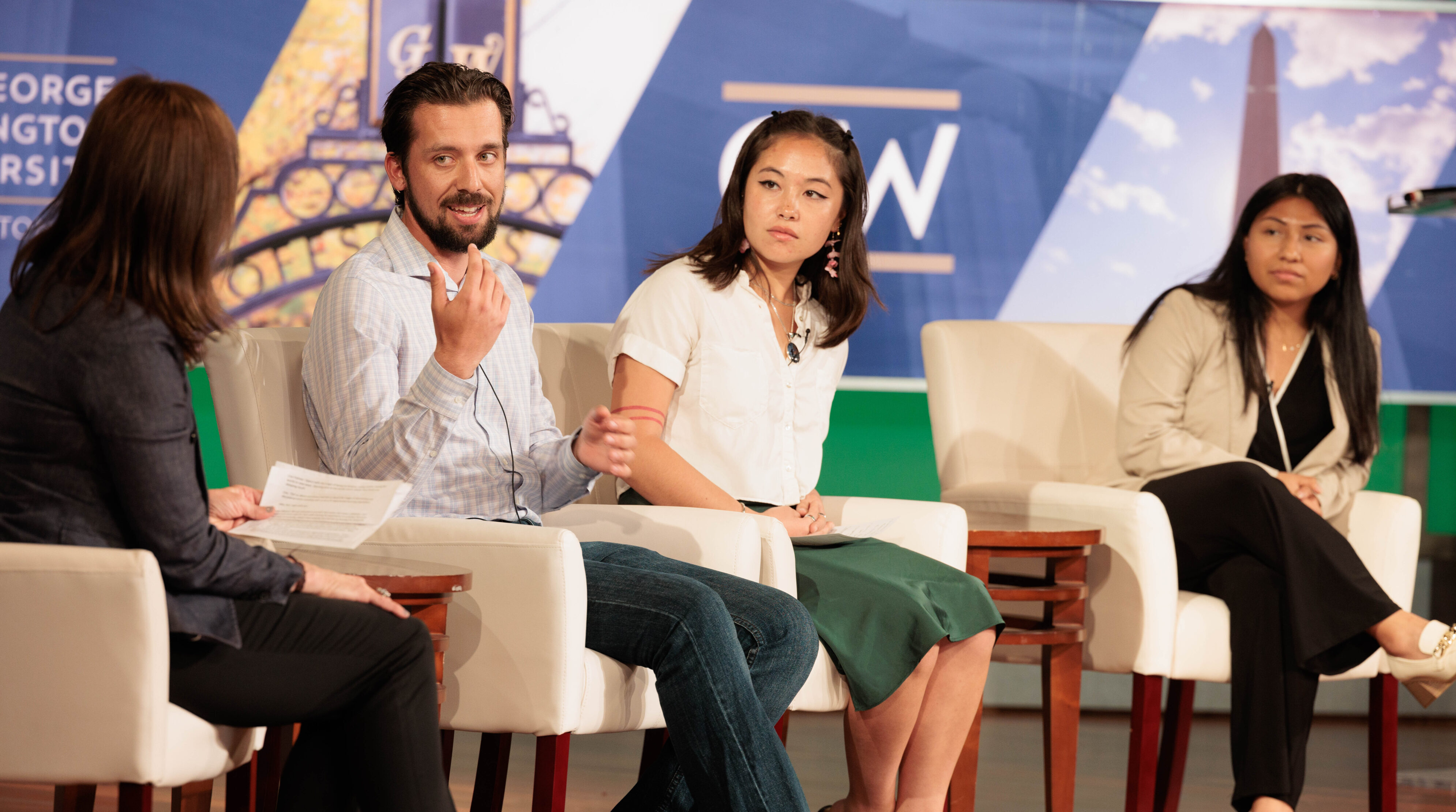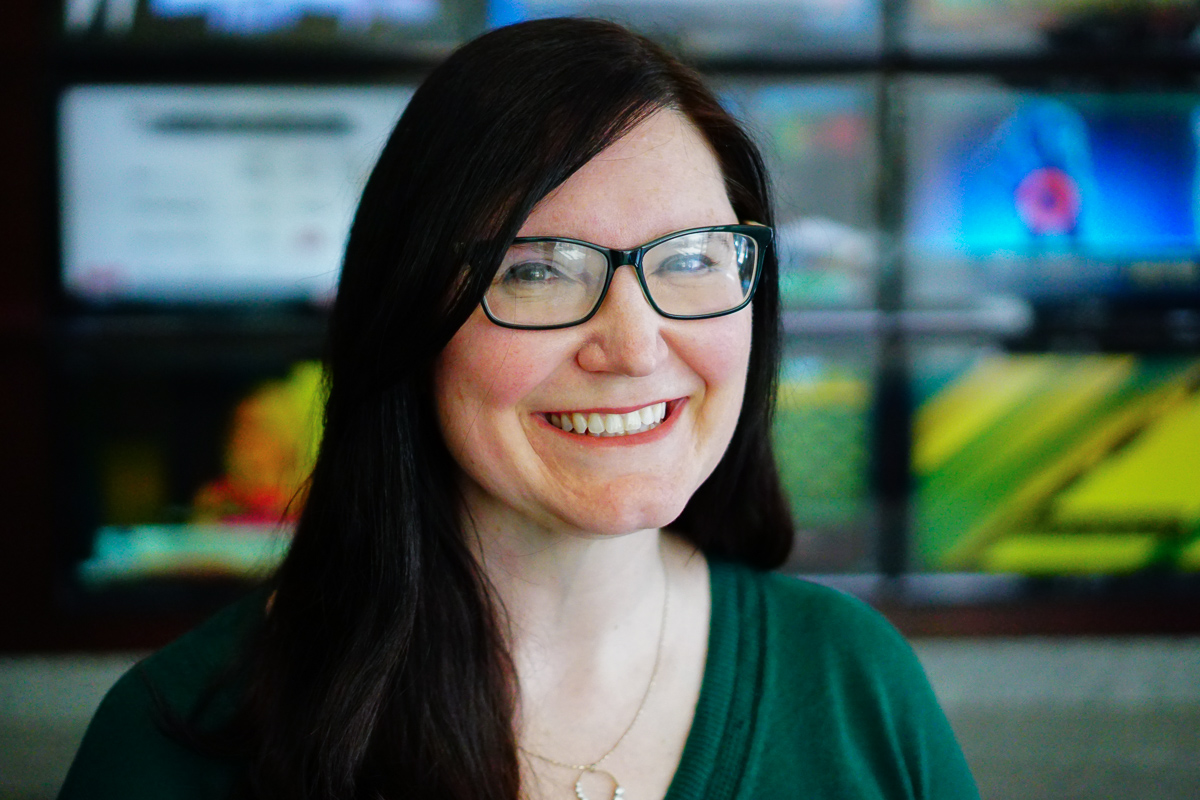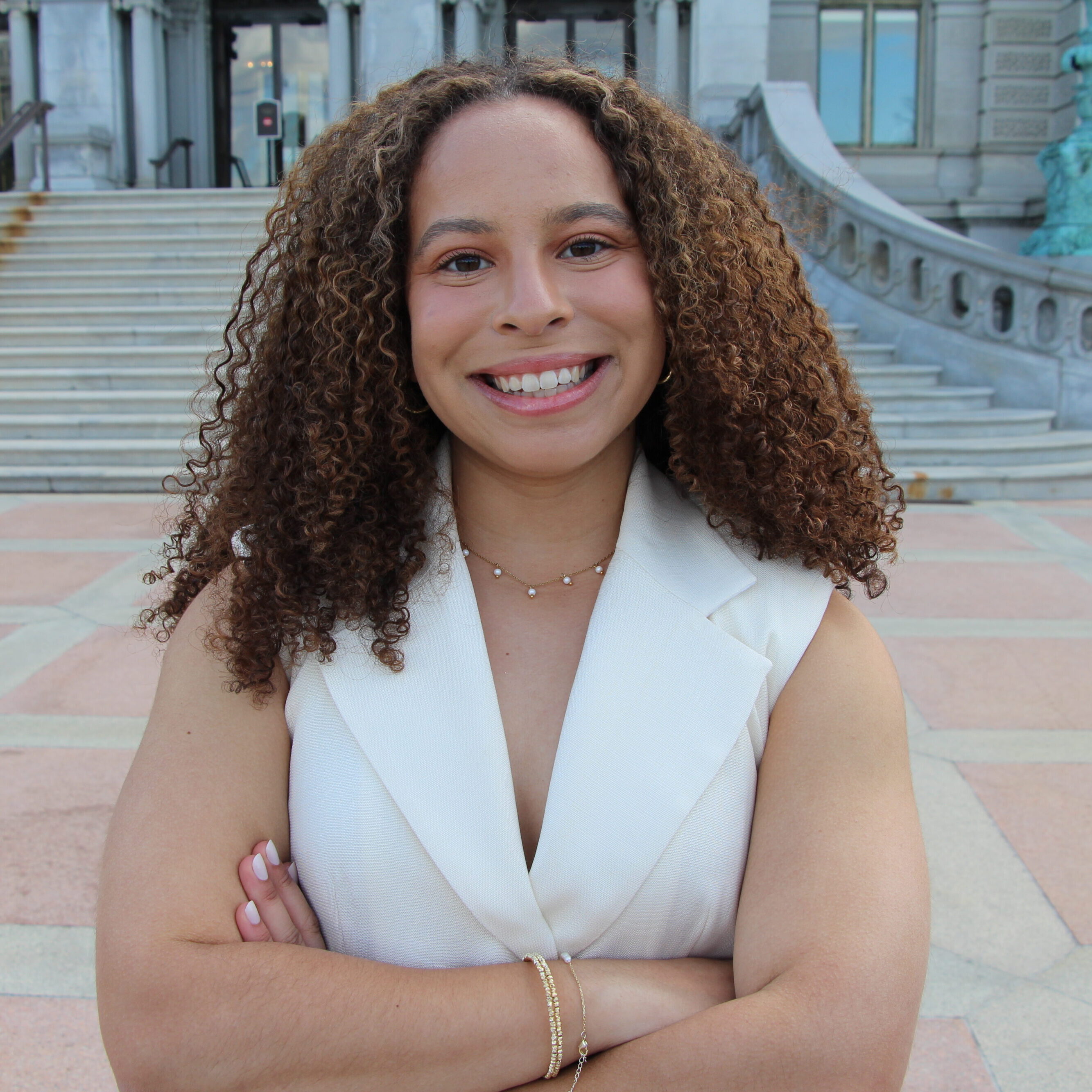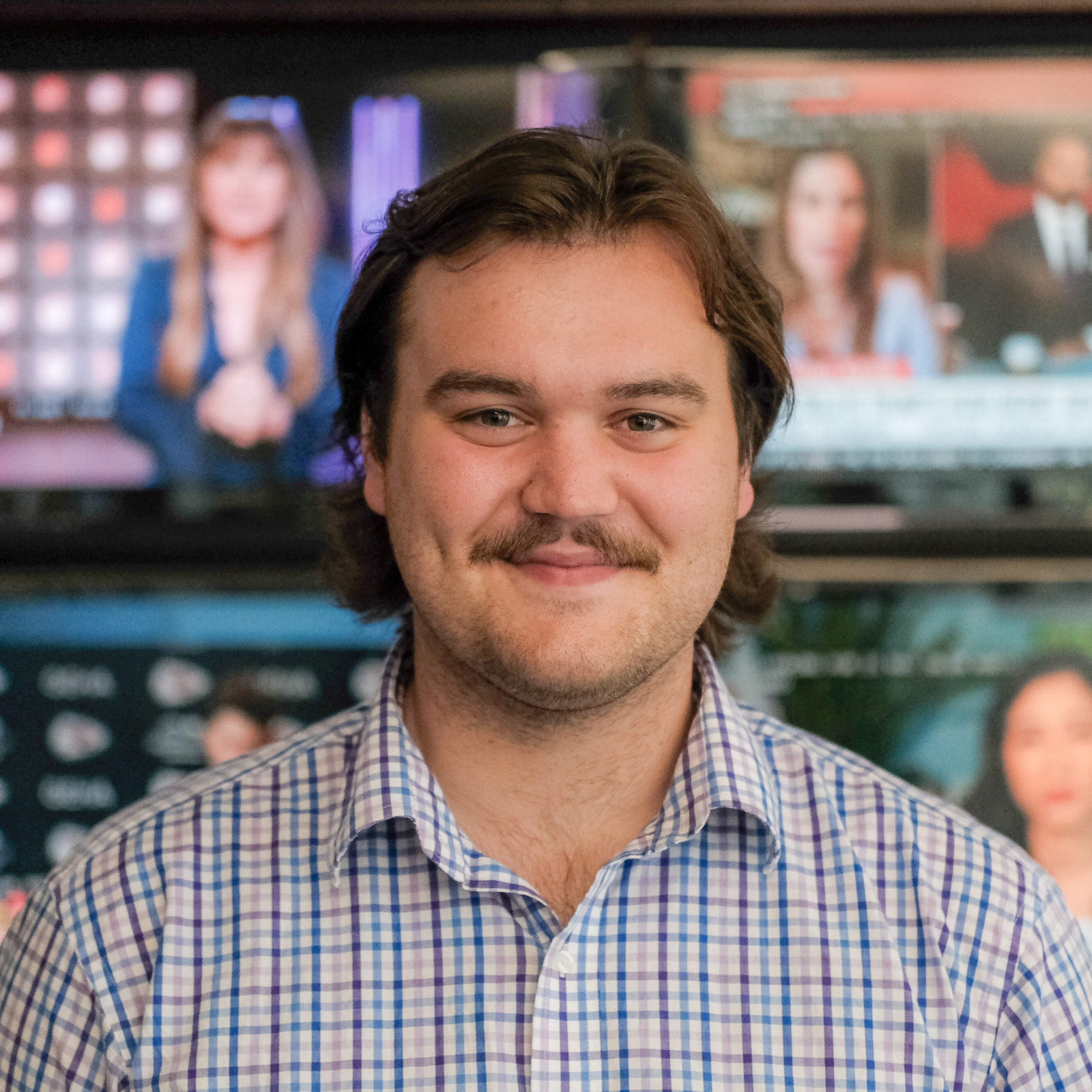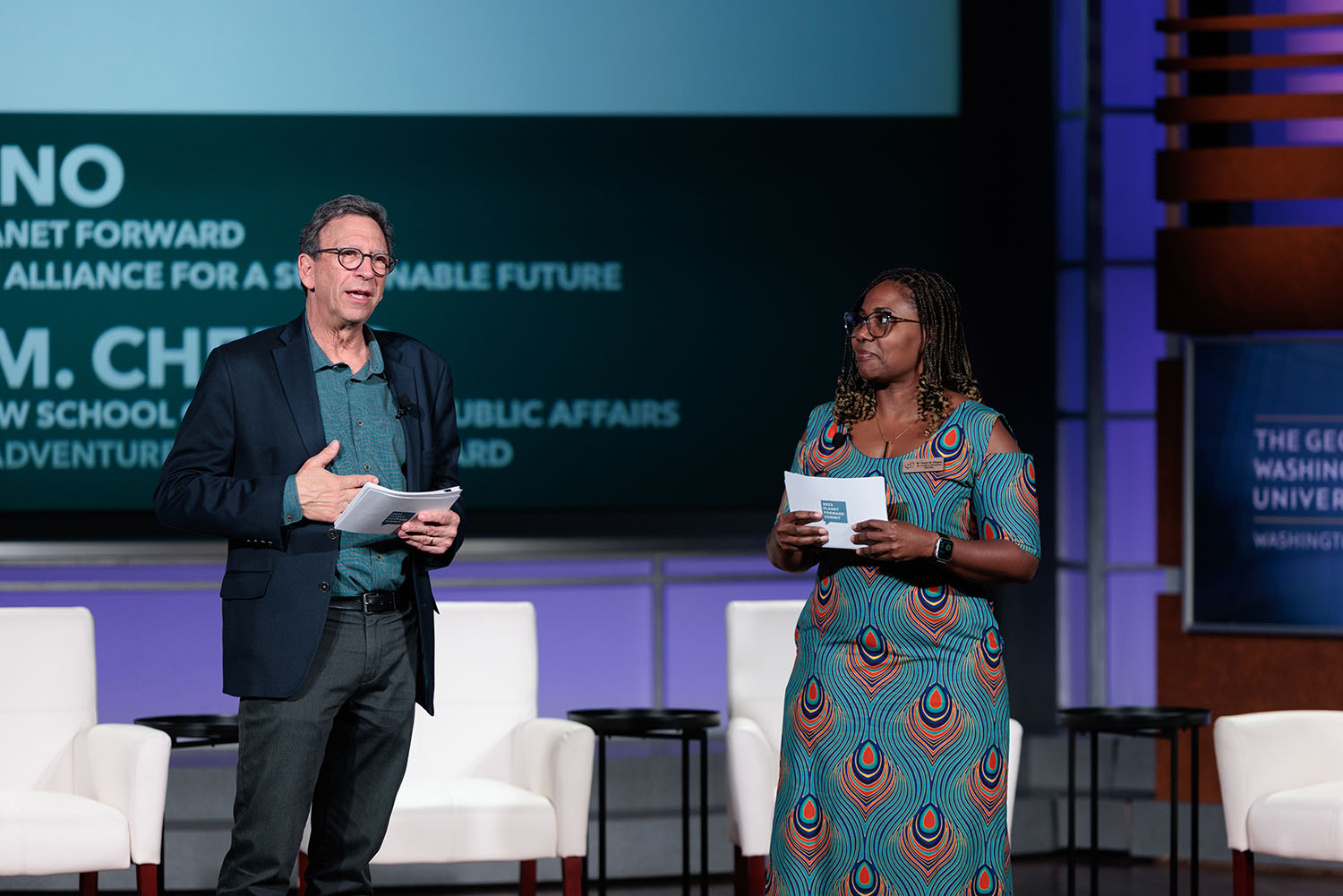What does it mean when ground that has long remained frozen begins to thaw? How can communities respond to the shifting of their very foundations? Research scientist Kelsey Nyland explained at the 2022 Summit.
Research spotlight: Alaskan permafrost with GW Department of Geography
What does it mean when ground that has long remained frozen begins to thaw? How can communities respond to the shifting of their very foundations?
Kelsey Nyland, Ph.D., a research scientist and adjunct professor at the George Washington University Department of Geography, is studying permafrost through the U.S. National Science Foundation-funded project Circumpolar Active Layer Monitoring (CALM). At the 2022 Planet Forward Summit, she discussed long-term trends of warming and thaw in Alaska, and the resulting impact on local ways of life.
Learn more by reading Kelsey’s research.





